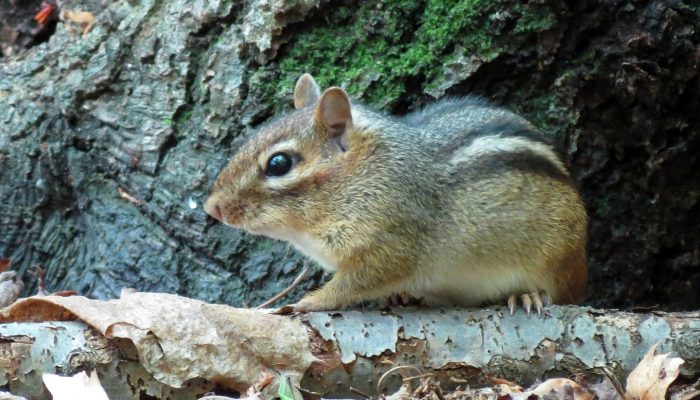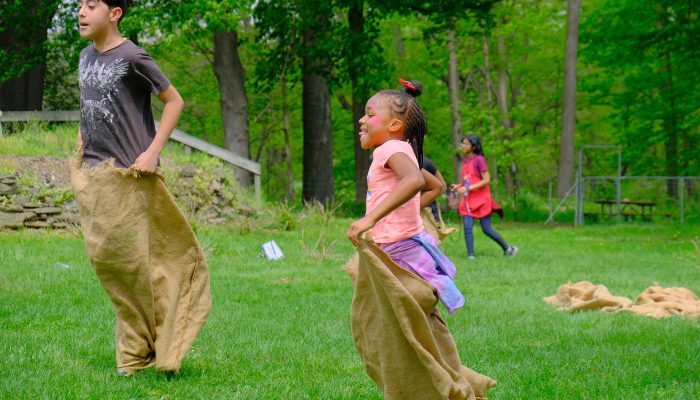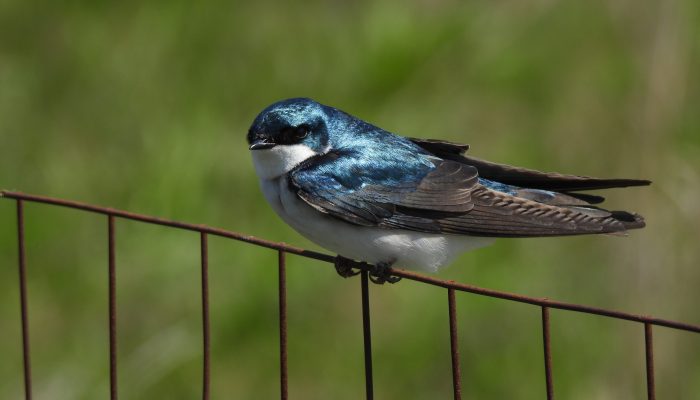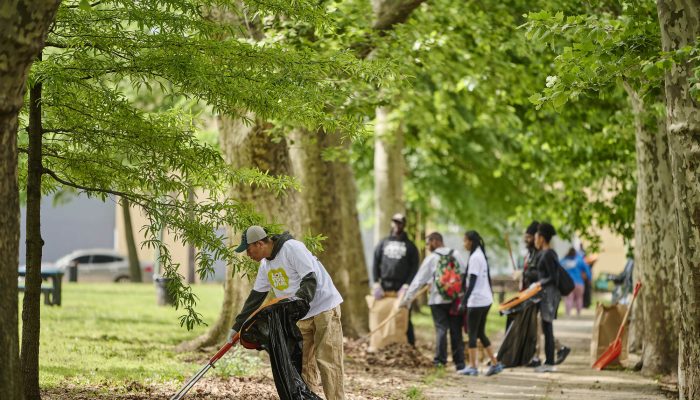By Christina Moresi, Environmental Educator
Wissahickon Environmental Center
As the days grow shorter and colder, you’re likely spending more time inside. You may be less active. Perhaps your pants have become a bit tighter. You might joke about your “winter weight” or cover yourself in a warm sweater. Adapting to the winter cold is not just a human behavior. Many animals also adapt to the changes in temperature, light, and food access that winter brings. Here’s a look at what, where, and how our local wildlife survive the winter.
Winter survival options: adapt, migrate, and hibernate
To prepare for winter, every animal either adapts, migrates, or hibernates. Some animals do a combination of these three:
- Animals who adapt to cold winters may:
- Grow thicker fur.
- Change their appearance to camouflage.
- Group together with other animals for warmth and food sharing.
- Animals migrate by moving somewhere else. They may:
- Dig deep into the earth.
- Travel a short distance.
- Fly around the world.
- Animals who hibernate engage in some form of sleep.
Hibernation: where and how
Hibernation is the way many of our local animals survive in cold weather. We use hibernation as a general term for sleeping through the winter. But there are various types of hibernation. Here are examples of how some local species hibernate:
Bats
All eight species of bats that live in PA are insectivores. That means they mostly eat insects.
When insects die off in the winter, some bats migrate south. Others gather underground and enter true hibernation. This is what happens to the bats:
- Their body temperature drops to the air temperature.
- Their breathing and heartbeat slows dramatically.
- Their fat stores are used while they sleep through the winter months.
If woken, they will use too much energy returning to sleep, and will not survive the winter. Scientists have discovered mass die-offs during hibernation due to White Nose Syndrome. This is a white fungus that grows on their noses and wakes them up mid-hibernation.
Butterflies
Most butterflies in our area will overwinter in the life stage they are in when winter begins.
Butterflies like swallowtails enter into their chrysalis or pupa stage in the fall. They will overwinter and emerge as butterflies in the spring.
Monarchs emerge from their chrysalises here as adults in late October. Then they migrate 2,500+ miles south to the cool oyamel fir forests in Central Mexico. They’re joined by hundreds of thousands of other monarchs from across North America. Once there, they enter diapause, a semi-dormant state. To survive migration and diapause the monarchs build up their fat reserves. They do this by eating milkweed as caterpillars and filling up on nectar as adults. Once they begin their migration south, they will not eat again until spring.
Chipmunks & groundhogs
The chipmunk and the groundhog both live underground in a burrow. There, they create various tunnels and chambers in these burrows. They build separate spaces for food storage, waste, and sleeping. They also create multiple exits to escape predators. As winter nears, the chipmunk stores food in their burrow. The groundhog collects leaves and other materials to create a comfy, insulated bed.
When winter arrives, the groundhog will enter true hibernation. They will sleep for as many as five months, and survive on their stored fat. The chipmunk’s sleep depends on the temperature. When the temperature drops near freezing, the chipmunk’s body slows down its functions. It will stay inactive until the temperatures rise. This could be a day, a week, or longer.
Frogs
Aquatic frogs such as the green frog, pickerel frog, and bullfrog survive the winter in the water—even if it freezes! They move to the bottom of their body of water. There, they depend on stored fat and sugar in their bodies and the dissolved oxygen in the water.
-
Their heart rate and breathing get very low—sometimes they even stop.
-
They no longer need to breathe through their lungs.
-
Instead, they absorb oxygen through their skin and cloaca (butt).
-
The sugar in their body prevents the frog from freezing solid—just like antifreeze.
If you see what looks like a “frozen” frog this winter, don’t worry. It will likely be fine once spring comes.
Check it out: see animals preparing for winter in our parks
- Squirrels hiding food for later.
- Chubby-cheeked chipmunks scurrying underground.
- Birds gathering to stay, while others travel on their way.
- Frogs hunkered down in their ponds.
When winter comes, our parks become new again with every visit. So put on those sweaters! Squeeze into your pants! Take a walk in one of our parks. You’ll work off a little bit of your stored fat and witness the unique change of seasons for all animals.




